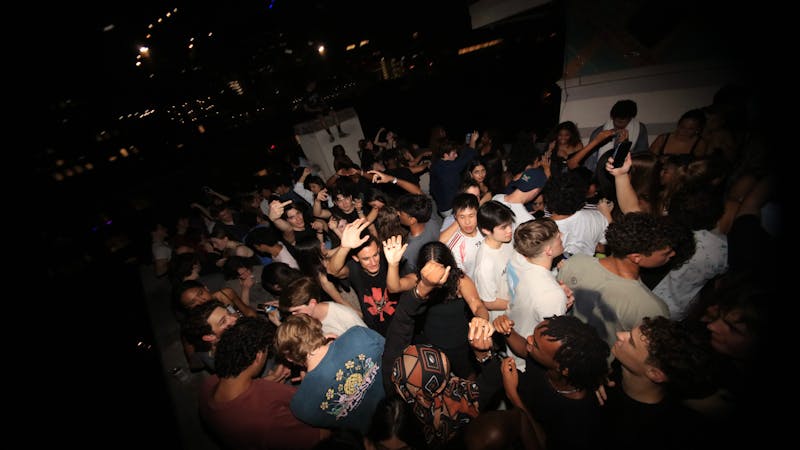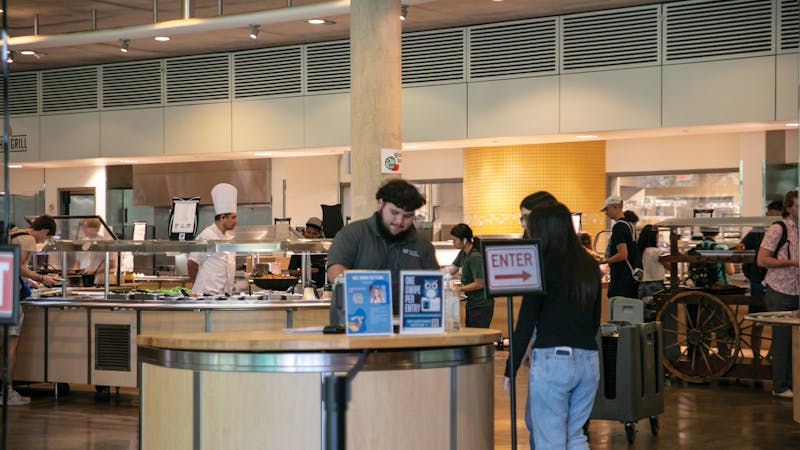Low vaccine survey response rate impedes fall semester planning
Only about half of the student body has filled out the vaccine survey sent out in the COVID-19 Response Weekly Update, and the non-satisfactory response rate is preventing the administration from planning for a fully in-person fall 2021 semester, according to Kevin Kirby, vice president of administration.
“Usually in surveys, if you get a third of people to respond, you’re generally happy,” Kirby said. “This is a different kind of survey where we need a much higher percentage return. I had already sent [the survey] out twice in the update that goes out on Mondays, and you’re going to see it a third time on April 12 again. We’re not asking for proof of vaccination in it. We’re just asking: ‘Hey, have you been vaccinated or not?’”
Jerusha Kasch, director of institutional crisis management, said that the administration doesn’t have sufficient knowledge about data such as the numbers of students that have been vaccinated.
“We don’t have a clear picture of our current vaccination status as of yet,” Kasch wrote in an email. “It is critical that members of the Rice community complete the survey so that current policies be reviewed and revised as we meet critical public health vaccine thresholds.”
According to Kirby, planning for the fall semester as it relates to activities on campus revolves largely around the percentage of the campus population that is vaccinated.
“We want a good response to the survey because it informs our policies about masks, testing and gathering size [for next semester],” Kirby said. “And we want to know when we can safely stop [these policies] or change them. So it’s really important for us to have accurate data about people’s vaccination status.”
Robert Chen, a Jones College senior, said that he was unaware of the vaccine survey despite receiving the weekly update emails.
“I feel bad for not filling it out; it definitely wasn’t an intentional avoidance,” Chen said. “My guess is many of my peers also don’t read the entire email every week because we’ve been receiving similar ones for almost a year. I’ve started to only search for information I’m looking for, like the number of positive cases.”
According to Chen, the administration can adopt some strategies to get a higher response rate.
“The weekly updates are almost always very long, and a survey so important isn’t even in the first paragraph,” Chen said. “It can easily get buried in words, and people like me who have short attention spans or people who are in a hurry will glance over it. If the administration wants students to fill out a survey, they should send it in a separate email or at least put ‘survey’ or ‘important’ in the subject line.”
Kirby said that the vaccine survey is the best way the administration can understand the immunity status of the Rice community due to their limited access to actual statistics.
“We’ve had three rounds and vaccinated maybe 2,300 people on campus,” Kirby said. “We don’t know [the exact number] because the information is private, and it’s not disclosed how many people have signed up to Baylor St. Luke’s. We may have facilitated that access in most of those cases, but we have no information about it because it’s private health information.”
President David Leebron said that the immunity status of the Rice population is one of the most important factors the administration will consider when deciding what kind of measures to set in place for next semester.
“If we can get to 85 and 90 percent vaccination by the fall, that will enable us to relax a lot of the measures that we have in place,” Leebron said. “So getting vaccinated [is] not just something you do for yourself. It’s something you do for your classmates and your friends and your community … And I hope everybody will get vaccinated and help us achieve that 85, 90 percent.”
According to Kirby, students are not the only ones the administration encourages to get vaccinated.
“It’s all members of our community,” Kirby said. “We have about 12,000 members of our community [in total]. It’s about 7,000 students, about 3,500 employees and then we’ve got almost a thousand of what I’d call semi-permanent visitors — people who come to campus and have access to the parking lots.”
Kirby said that the administration is experiencing difficulty vaccinating the broader Rice community despite an ample supply of vaccines.
“I don’t have definitive proof, but what it looks like is happening in Texas is that supply and demand are about equal,” Kirby said. “Looking back, [a vaccine] was really hard to get. It’s only been in the last week or two that we’ve had widespread availability, and I think around Texas. Now, we can [request for] more vaccines, but we have no more takers. We’re beating the bushes asking for people to be vaccinated.”
According to Leebron, he thinks there are a variety of reasons why people at Rice have not chosen to sign up for the vaccine.
“I am a little concerned that maybe some people could sign up [but choose not to], whether that’s because they haven’t taken the time or they have some philosophical or other reasons that they think they shouldn’t get the vaccine,” Leebron said. “A small number of people with certain kinds of illnesses [might need to] get a particular kind of vaccine rather than any vaccine, but the vast majority of people should just get any vaccine.”
Leebron said that he wishes to see most of the Rice community becoming vaccinated by next semester.
“Frankly, every time I encounter somebody from Rice these days, I say: ‘Have you gotten your vaccine yet?’” Leebron said. “And I hope people will really encourage their friends and [families] to make sure they get vaccinated. Especially for returning students in the fall, [I hope] that they will get vaccinated before they leave if they possibly can.”
More from The Rice Thresher

Dis-O, move-in weekend see increase in alcohol transports from last year
Rice’s first wet weekend of the year saw four times as many calls for intoxication-related transports of students to the hospital compared to the previous three years, according to emails sent out by college presidents and chief justices.

On-campus meal plan changed to unlimited swipes
Housing and Dining recently revealed a new dining plan for the upcoming semester. The required on-campus meal plan now has unlimited meal swipes, compared to 375 meal swipes last year. H&D said the previous on-campus meal plan was for students who intended to eat on campus 15 to 25 meals a week.

Rice Stadium student section relocated
The Rice Stadium student section has been relocated to sections 106 and 107, according to an announcement from Rice Athletics on X.

Please note All comments are eligible for publication by The Rice Thresher.